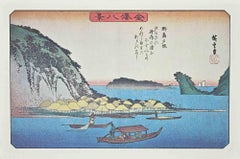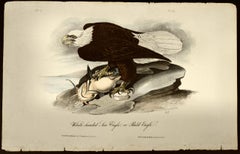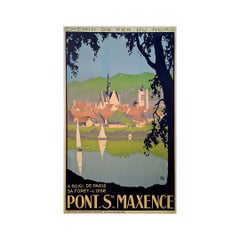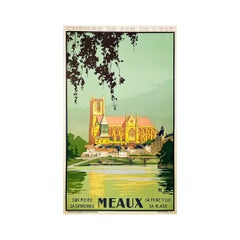ALO (Charles Jean Hallo) Art
to
1
3
2
Overall Width
to
Overall Height
to
5
2
3
5
5
4
3
3
2
2
2
1
1
1
1
1
1
1
1
1
5
3
3
3
5
8,816
2,808
1,655
1,313
3
2
Artist: ALO (Charles Jean Hallo)
Poster Chemin de Fer de Paris à Orléans Le Mont-Dore Route thermale d'Auvergne
By ALO (Charles Jean Hallo)
Located in PARIS, FR
Charles-Jean Hallo (Alo)'s 1927 poster for Chemin de Fer de Paris à Orléans, showcasing Le Mont-Dore in Auvergne, stands as a visual ode, transcending the boundaries of a mere advert...
Category
1920s ALO (Charles Jean Hallo) Art
Materials
Paper, Linen, Lithograph
Original Pointe de Penmarch vintage French travel poster
By ALO (Charles Jean Hallo)
Located in Spokane, WA
Original poster: Pointe de Penmarch (Finistere). Circuit Automobile au Depart de Quimper. Artist: ALO, (Charles Hallo) 1884-1969. Archival linen backed and ready to frame. Stone lithograph printed in 1926. Rare travel poster.
The poster is in very good shape. The right-hand border does have a mark on the outside edge as shown in the images. Minimal wear for a used poster...
Category
1920s Art Nouveau ALO (Charles Jean Hallo) Art
Materials
Lithograph
$1,480 Sale Price
20% Off
Original poster by ALO - Chateau d'Amboise Chemins de Fer Paris Orléans Midi
By ALO (Charles Jean Hallo)
Located in PARIS, FR
Charles-Jean Hallo, known as ALO 🇫🇷 (1882-1969) is a French painter, draftsman, illustrator, engraver and photographer.
After studying at the École des Beaux-Arts in Paris, where he attended classes with Charles Cottet...
Category
1930s ALO (Charles Jean Hallo) Art
Materials
Lithograph, Paper, Linen
Alo's original poster for Chemin de Fer du Nord - Arras
By ALO (Charles Jean Hallo)
Located in PARIS, FR
Charles-Jean Hallo (Alo)'s poster for Chemin de Fer du Nord, showcasing Arras, unfolds as a visual symphony, transcending the boundaries of a mere advertisement.
Alo's artistic mast...
Category
1930s ALO (Charles Jean Hallo) Art
Materials
Lithograph, Paper, Linen
Chemin de Fer De Paris A Orleans Collonges [Hotel de Friac]
By ALO (Charles Jean Hallo)
Located in New York, NY
Alo. (Georges Hallo) Chemin de Fer De Paris A Orleans Collonges [Hotel de Friac] 1933.Color lithograph
He is best known as the author of many tourist posters on behalf of sev...
Category
1930s Naturalistic ALO (Charles Jean Hallo) Art
Materials
Lithograph
Related Items
Eight Scenic Spots in Kanazawa After Utagawa Hiroshige-Mid 20th Century
By Utagawa Hiroshige
Located in Roma, IT
Eight Scenic Spots in Kanazawa is a modern artwork realized in the Mid-20th Century.
Mixed colored lithograph after a woodcut realized by the great Japanese artist Utagawa Hiroshige...
Category
Mid-20th Century Modern ALO (Charles Jean Hallo) Art
Materials
Lithograph
$237
H 10.24 in W 14.97 in D 0.04 in
"Bald Eagle", an Original Audubon Hand-colored First Edition Lithograph
By After John James Audubon
Located in Alamo, CA
An original rare and extremely collectible first octavo edition John James Audubon hand-colored royal octavo lithograph entitled "White-headed Sea Eagle or Bald Eagle", No. 3, Plate ...
Category
Mid-19th Century Naturalistic ALO (Charles Jean Hallo) Art
Materials
Lithograph
Geneva, Port de la Treille - Lithograph by A. Fontanesi - 1854
By Antonio Fontanesi
Located in Roma, IT
City of Geneva is an original lithograph, realized by Antonio Fantanesi, hand-signed.
Image Dimension: 20.5 x15.5 cm
Included a Passepartout.
In good conditions.
Here the artwor...
Category
1850s Naturalistic ALO (Charles Jean Hallo) Art
Materials
Lithograph
$533
H 20.08 in W 14.18 in D 0.04 in
A Family of Moorhens & Lilly Pad: A 19th C. Hand-colored Lithograph by Gould
By John Gould and Henry Constantine Richter
Located in Alamo, CA
This is an original 19th century hand-colored folio-sized lithograph entitled "Gallinula Chloropus" (Moorhen) by John Gould, published in his "Birds of Great Britain", published in London between 1862 and 1873. The print, which was drawn by Gould and Henry Richter and lithographed by Walter & Cohn, depicts a family of Moorhens, including two adults and six babies in a beautiful landscape. The adults are in the water and the babies are lying on the leaves a flowering lilly pad.
This striking Gould hand-colored moorhen family lithograph is augmented with gum-arabic paint. The sheet measures 14.88" high and 21.75" wide. It is in excellent condition, other than a spot in the upper portion of the right margin and two small spots at the edge of the lower margin on the left. The original descriptive text pages from Gould's 19th century publication are included.
There are several other unframed Gould hummingbird lithographs available on our 1stdibs and InCollect storefronts. Two or more of these striking lithographs would make an attractive display grouping. A discount is available for purchase of a set depending on the number. These additional Gould hummingbirds may be viewed by typing Timeless Intaglio...
Category
Mid-19th Century Naturalistic ALO (Charles Jean Hallo) Art
Materials
Lithograph
Forest Triptych, Looking Up Through The Trees, Blue Nature, Handmade Cyanotype
By Kind of Cyan
Located in Barcelona, ES
This series of cyanotype triptychs showcases the beauty of nature scenes, including stunning beaches and oceans, as well as the intricate textures of w...
Category
2010s Naturalistic ALO (Charles Jean Hallo) Art
Materials
Lithograph, Rag Paper
$704 Sale Price
20% Off
H 40 in W 83 in
JEUX DE PAGES
By (after) Pablo Picasso
Located in Aventura, FL
Selected from the personal collection inherited by Marina Picasso, Pablo Picasso's granddaughter. After Pablo Picasso's death, his granddaughter Marina authorized the printing of t...
Category
1980s Cubist ALO (Charles Jean Hallo) Art
Materials
Lithograph, Paper
"CONGREGATION OF WITS: BOX SET", 41 silkscreen prints, double-sided, custom box
By Andrew Cornell Robinson
Located in Toronto, Ontario
"CONGREGATION OF WITS, Box Set of 41 Prints", 2018, limited-edition collection of 40 double-sided silkscreen prints, plus one title print, by Andrew Cornell Robinson. There are 10 box sets in custom-made chocolate linen archival boxes with a gold stamped title. Each print is signed, stamped and editioned. The prints measure 17x17", the box 17.5x17.5".
Note the double-sided printing – surfaces of text, surfaces of image. The installation (see photos above) is a striking performance in itself with myriad possibilities for color, pattern, language, culture, politics, identity. The artist is pleased to offer guidance on the installation, according to the collector's wishes. Or a collector may arrange personally. It's a dynamic body of work that delights in the craft of making and the experience of revealing a tapestry of image and language.
Initially inspired by a visit to the Talking Sculptures...
Category
21st Century and Contemporary Contemporary ALO (Charles Jean Hallo) Art
Materials
Paper, Archival Paper, Color, Screen, Linen
Serene Cove Waters, Feng Shui Seascape, Blue and White Ripples, Horizontal Print
By Kind of Cyan
Located in Barcelona, ES
This is an exclusive handprinted limited edition cyanotype.
"Serene Cove Waters" is a handmade cyanotype print portraying fresh ripples movements in a Greek Islands cove...
Category
2010s Abstract ALO (Charles Jean Hallo) Art
Materials
Emulsion, Mixed Media, Watercolor, Photographic Paper, Lithograph, Monop...
Marching on a Butterbur Leaf
By Yoshitomo Nara
Located in Washington , DC, DC
Category
21st Century and Contemporary Contemporary ALO (Charles Jean Hallo) Art
Materials
Lithograph, Linen, Paper
Saw-bill Hummingbirds and Nest: Framed 19th C. Hand-colored Lithograph by Gould
By John Gould and Henry Constantine Richter
Located in Alamo, CA
This is a hand-colored folio sized lithograph entitled "Grypus Naevius" (Saw-bill Hummingbird with Nest & Eggs) by John Gould, published in his "A Monograph of the Trochilidae, or Family of Humming-birds", published in London in 1850. The print, which was drawn by Gould and Henry Richter and lithographed by Hullmandel and Walton, depicts three black, brown and peach-colored hummingbirds about a nest, containing at least two eggs. The beautiful soft grey-green foliage includes a white, soft pink and cranberry-colored flower.
This beautiful Gould hand-colored hummingbird lithograph is augmented with iridescent gum-arabic paint. It is in excellent condition. The original text page is included, which has extensive foxing, as lower quality paper was used for the text pages.
There are several other unframed Gould hummingbird lithographs available via our 1stdibs storefront. Two or more of these would make an attractive display grouping. A discount is available for purchase of a set depending on the number. These additional Gould hummingbirds...
Category
Mid-19th Century Naturalistic ALO (Charles Jean Hallo) Art
Materials
Lithograph
Composition - Original Lithograph by Jean-Paul Riopelle - 1968
By Jean-Paul Riopelle
Located in Roma, IT
Composition is an original lithograph realized by Jean-Paul Riopelle for the Art Magazine Derrière le Miroir, no. 171.
The artwork is from the art magazine Derriere Le Miroir. Print...
Category
1960s Abstract ALO (Charles Jean Hallo) Art
Materials
Paper, Lithograph
$474
H 14.85 in W 10.83 in D 0.04 in
Color Field Target lithograph on hand made paper by Kenneth Noland signed Framed
By Kenneth Noland
Located in New York, NY
Kenneth Noland
Untitled Target, 2004
Lithograph on hand made paper with deckled edges
Signed and numbered in pencil 48/75 on the lower front; bears the artist's blind stamp
Published...
Category
Early 2000s Color-Field ALO (Charles Jean Hallo) Art
Materials
Mixed Media, Handmade Paper, Lithograph
Kenneth NolandColor Field Target lithograph on hand made paper by Kenneth Noland signed Framed, 2004
$15,000
H 28.5 in W 22.5 in D 1.75 in
Previously Available Items
Original poster of Pont Ste Maxence for the Chemin de Fer du Nord by Alo
By ALO (Charles Jean Hallo)
Located in PARIS, FR
Tourist original poster of Pont Ste Maxence for the Chemin de Fer du Nord illustrated by Alo.
Charles-Jean Hallo ( 1882 - 1969 ), known as ALO is a French painter, draftsman, illust...
Category
1930s ALO (Charles Jean Hallo) Art
Materials
Linen, Paper, Lithograph
1935 original poster of Meaux for the Chemin de Fer de l'Est illustrated by Alo
By ALO (Charles Jean Hallo)
Located in PARIS, FR
Tourist poster of Meaux for the Chemin de Fer de l'Est illustrated by Alo.
Charles-Jean Hallo ( 1882 - 1969 ), known as ALO is a French painter, draftsm...
Category
1930s ALO (Charles Jean Hallo) Art
Materials
Linen, Paper, Lithograph
Senlis Chemin de fer du Nord original French National Railroad vintage poster
By ALO (Charles Jean Hallo)
Located in Spokane, WA
Original French antique travel poster created by the French National Railway; Chemin de Fer du Nord. SENLIS Son Musee de la Venerie. Centre Unique d'Excursions Forestiers. Fren...
Category
1930s Art Deco ALO (Charles Jean Hallo) Art
Materials
Lithograph
Alo (charles Jean Hallo) art for sale on 1stDibs.
Find a wide variety of authentic ALO (Charles Jean Hallo) art available for sale on 1stDibs. You can also browse by medium to find art by ALO (Charles Jean Hallo) in lithograph, fabric, linen and more. Not every interior allows for large ALO (Charles Jean Hallo) art, so small editions measuring 24 inches across are available. Customers who are interested in this artist might also find the work of Jean Louis Prévost, Paul-Adolphe Rajon, and Johan Christoph Volkhamer. ALO (Charles Jean Hallo) art prices can differ depending upon medium, time period and other attributes. On 1stDibs, the price for these items starts at $1,850 and tops out at $3,560, while the average work can sell for $2,585.
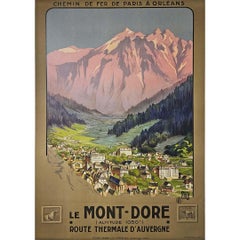
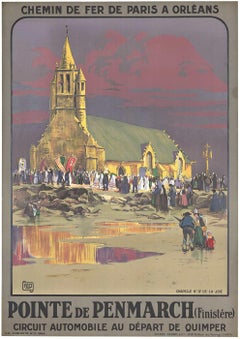
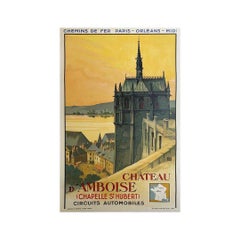
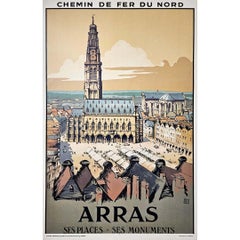
![friac site officiel Chemin de Fer De Paris A Orleans Collonges [Hotel de Friac]](https://a.1stdibscdn.com/archivesE/upload/a_2922/1474728937275/Alo_Collonges_master.jpg?width=240)
